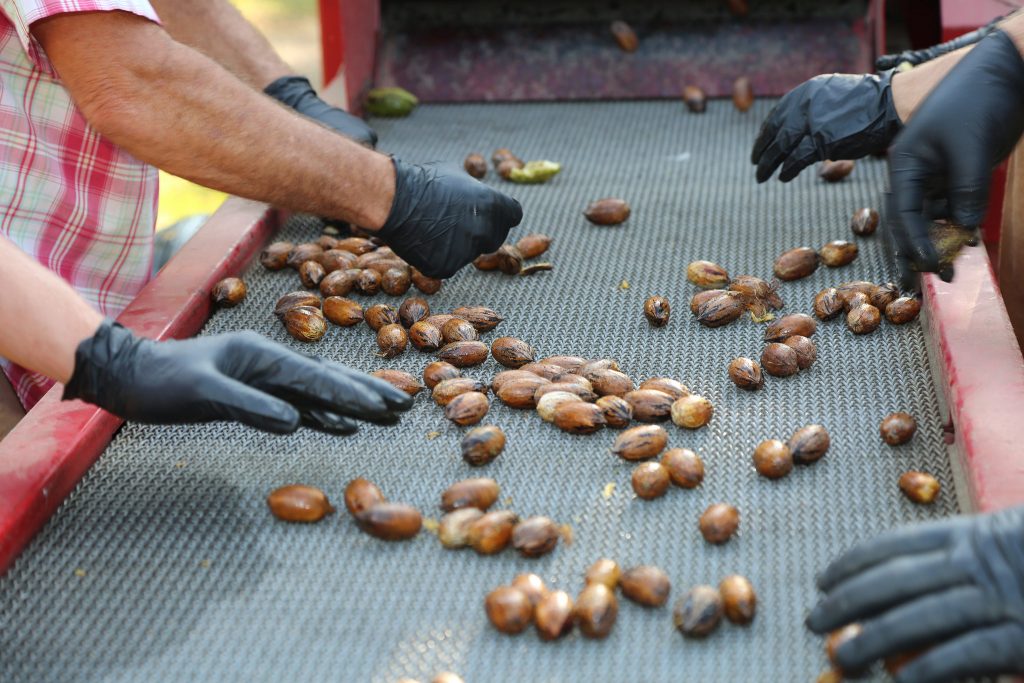
This year’s pecan crop in Georgia exceeded expectations. Producers need to brace themselves for a drop in volume next year, which is expected with pecan trees being alternate bearing plants.
University of Georgia Cooperative Extension pecan specialist Lenny Wells fully expects the 2021 crop season to be a down year for Georgia growers.
“From a volume perspective yes, I don’t really see how we can come back with this kind of crop statewide,” Wells said. “Now with the young trees that are out there, they’ll probably still come back with a decent crop. Anybody that fruit thins or manages their crop load will probably have a decent crop. Overall, I would expect next year to be an off year.”
Alternate Bearing Cycle
Since pecan trees are alternate bearing, if the trees produce a good crop one year, they are less likely to produce a similar result the following year. However, with the right management system, producers can still get the most out of their trees.
“We had kind of leveled off to where before the hurricane we had gotten to be pretty even in our production. We would be up and down a little, but we didn’t have those big swings like we used to have. But the hurricane (Michael) kind of reset everything,” Wells said.
“When you had all those trees that got broken up and they had to regrow new fruiting wood and all that, it reset the clock and sent everything back into a big alternate bearing cycle. Any growers that did not manage their crop load, those trees are going to be back into a big swing. There’s things they can do to manage that. A lot of them didn’t want to this year because it’s really been a couple of years since they’ve had a crop, which is understandable.”
Georgia Crop This Year
Wells estimates that this year’s Georgia pecan crop will net between 120 million and 125 million pounds.
According to UGA Extension, Georgia is the country’s largest supplier of pecans, accounting for about a third of the U.S. pecan production.









